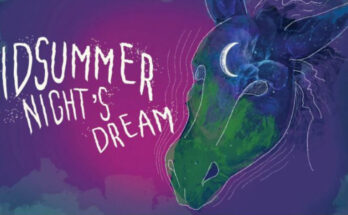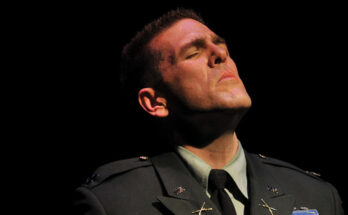Così fan tutte was the last of the three librettos written for Mozart by Lorenzo da Ponte, the indefatigable scapegoat whose career of diverse occupations ended with his death in New York City in 1839. Da Ponte, by the way, was appointed the first professor of Italian Literature at Columbia University in 1825, and was responsible for establishing New York’s first Italian Opera House, which was destroyed by a fire a few years later.
He quoted himself by lifting a line he previously had written for his libretto of Mozart’s The Marriage of Figaro, where the cynical old music teacher Don Basilio sings “cosi fan tutte le belle.” This catch phrase can be translated as “all women behave that way.” A literal and gender neutral translation of the opera’s title may also be, “everyone does this.” Its original subtitle, “or the school for lovers,” does not discriminate between men and women, who both can learn to deceive and be deceived, and learn from their experiences.
The first of the three operas, The Marriage of Figaro is the most “overtly comic” and classified as a “comic opera.” The second, Don Giovanni, is described as a “drama giacoso,” literally translated as “jacose drama” whose nature can be defined as “merry, humorous, witty, facetious, joking,” although not so overtly comic because of some serious undertones. Così fan tutte has been characterized somewhat ambiguously as both a comic opera and jacose opera.
This jocose aspect should not predispose us to relegate the plot as too unrealistically ridiculous. True dramatic realism was not introduced in opera until almost a century after Così fan tutte’s premiere in Vienna on Jan. 26, 1790. We must indeed suspend disbelief in any semblance of reality as we watch the unraveling of rapid-fire recitatives interspersed with an abundance of enchanting ensembles. These ensembles make our listening to them the ecstatic experience Mozart intended and Così fan tutte was the last of the three librettos ?written for Mozart by Lorenzo da Ponte, the indefatigable scapegoat whose career of diverse occupations ended with his death in New York City in 1839. Da Ponte, by the way, was appointed the first professor of Italian Literature at Columbia University in 1825, and was responsible for establishing New York’s first Italian Opera House, which was destroyed by a fire a few years later.
He quoted himself by lifting a line he previously had written for his libretto of Mozart’s The Marriage of Figaro, where the cynical old music teacher Don Basilio sings “cosi fan tutte le belle.” This catch phrase can be translated as “all women behave that way.” A literal and gender neutral translation of the opera’s title may also be, “everyone does this.” Its original subtitle, “or the school for lovers,” does not discriminate between men and women, who both can learn to deceive and be deceived, and learn from their experiences.
The first of the three operas, The Marriage of Figaro is the most “overtly comic” and classified as a “comic opera.” The second, Don Giovanni, is described as a “drama giacoso,” literally translated as “jacose drama” whose nature can be defined as “merry, humorous, witty, facetious, joking,” although not so overtly comic because of some serious undertones. Così fan tutte has been characterized somewhat ambiguously as both a comic opera and jacose opera.
This jocose aspect should not predispose us to relegate the plot as too unrealistically ridiculous. True dramatic realism was not introduced in opera until almost a century after Così fan tutte’s premiere in Vienna on Jan. 26, 1790. We must indeed suspend disbelief in any semblance of reality as we watch the unraveling of rapid-fire recitatives interspersed with an abundance of enchanting ensembles. These ensembles make our listening to them the ecstatic experience Mozart intended and which achieves and overshadows any inanities of plot: two men disguised to not be recognized by their fiancées, or a maid disguised first as a male doctor and later as a male notary, or the ability of a magnet to withdraw poison from a near-dying person, or the entire action taking place within 24 hours.
Of these three collaborations, it’s ironically curious, as Da Ponte biographer Sheila Hodges states, “Both Mozart and Da Ponte are tantalizingly silent about how they worked together and virtually nothing is known of their collaboration.” We are left to speculate they both conceptualized along the same thought patterns, emphasizing an implicit jocosity of farcical intention. In fact, in the second act Don Alfonso and Despina, catalysts for propelling the plot, in unison (as an aside) declare, “La piu bella commediola no s’e vista o si verdra.” (A more amusing little farce has not been seen nor will ever be seen.)
Thanks to the combined richly imaginative talents of Mozart and Da Ponte, all three operas contain intriguing innuendos regarding social, cultural and historical contexts of their time to counterbalance obvious comic elements. In Così fan tutte the dilemmas Dorabella and Fiordiligi must disentangle are the same vulnerable emotional conflicts some of us may face — a choice between safely conventional, yet unloving, relationships versus a natural, passionate attraction to someone not fully known, which we may or may not be able to suppress successfully.
Moreover, at the final curtain, depending on the stage director’s interpretation, the audience is left with an unresolved question: Did Dorabella and Fiordiligi go off with their original fiancés or with the “other” pseudo-disguised young men?
Mozart biographer, W.J. Turner, cogently concludes that Così fan tutte “from a musical point of view might be considered the most perfect and flawless of all his operas.” This appraisal is matched by the comment of musicologist Edward J. Dent, Così fan tutte is the best of all Da Ponte’s librettos and the most exquisite work of art among Mozart’s operas.”




Mr. Jack,
I can’t find your email, but I just wanted to let you know that I took your class a few years ago, and I’m so thankful for it.
I started collecting opera on vinyl.
You’re a wonderful professor, and you really inspired me.
Thank you and God bless.
Hope you see this,
Sara Betancur